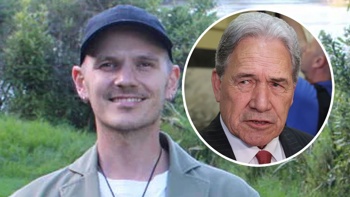THREE KEY FACTS
- Total of 230 recreational anglers caught illegally raiding marine reserves in two years.
- Department of Conservation urges the public to report illegal fishing with detailed information and evidence including photos and video.
- Legasea’s Chris Scott highlights greed as a primary driver behind repeated poaching offences.
Two hundred and thirty recreational anglers have been caught illegally raiding marine reserves around New Zealand in the past two years in what the Department of Conservation (DoC) describes as a “significant problem”.
Official information obtained by the Herald reveals the extent of the issue, showing Auckland, Taranaki, Hawke’s Bay and Coromandel as the locations where most offences were racked up.
DoC’s principal science adviser in the agency’s marine ecosystem team, Shane Geange, said some people were unaware of the rules but that “wasn’t an excuse”.
He said others plundered fully protected areas out of “desperation”, and some wilfully and repeatedly ignored the rules.
“You’ve got people who are just repeat offenders, they don’t care about the rules and they’re going back [to the same areas] to try their luck and circumvent the rules over and over again,” he told the Herald.
 Divers gathering kina inside Auckland's Long Bay Okura marine reserve. Photo / Supplied
Divers gathering kina inside Auckland's Long Bay Okura marine reserve. Photo / Supplied
Geange pointed to a case last year where a man, who has name suppression, was fined $4000 after repeatedly taking snapper from the marine reserve at Auckland’s Long Bay, and another case where a Gisborne man was jailed for taking crayfish from Te Tapuwae o Rongokako reserve.
A spokesman for the recreational fishing group Legasea, Chris Scott, was scathing of those who disregarded the rules.
“There’s a huge element of greed. You see people who have been caught several times. They don’t care. There’s no excuse for that – that’s flat-out poaching,” he said.
 A man kayak fishing in Whangārei Harbour's marine reserve. Photo / Supplied
A man kayak fishing in Whangārei Harbour's marine reserve. Photo / Supplied
Scott said fishers not knowing the locations of marine reserves didn’t wash considering the abundance of information online.
“A lot of these people will have the excuse that they didn’t know but that just means you’ve got to do a better job of preparing where you’re going fishing. Look where you’re fishing, plan out your trip.”
The Herald’s data obtained from DoC showed between May 15, 2022, and May 15, 2024, rangers identified 165 offences during patrols of marine reserves and there were another 32 occasions where rangers intercepted offenders after tip-offs from the public.
During the same time period, DoC received a total of 361 calls or emails from the public about alleged illegal activity which resulted in an additional 33 offences.
 Department of Conservation principal science adviser Shane Geange at the Taputeranga Marine Reserve on Wellington’s South Coast. Photo / Mark Mitchell
Department of Conservation principal science adviser Shane Geange at the Taputeranga Marine Reserve on Wellington’s South Coast. Photo / Mark Mitchell
Geange said DoC had limited resources and the agency relied “heavily” on the public. He urged people to take photos, videos and notes if they spotted offending, providing they could do so safely.
“When the public report [to DoC], we need really good information to help support a prosecution if it comes to that. GPS locations are really good if we’ve got that, photographs of the offence as well are really valuable, [vehicle] licence plate numbers and boat registrations,” he said.
It was not just recreational fishers who got caught fishing in marine reserves.
 Amaltal Fishing Co, owned by Talley's Group, was fined for fishing in Hikurangi Marine Reserve off Kaikōura with its trawler the Amaltal Mariner. Photo / Supplied
Amaltal Fishing Co, owned by Talley's Group, was fined for fishing in Hikurangi Marine Reserve off Kaikōura with its trawler the Amaltal Mariner. Photo / Supplied
The Ministry for Primary Industries told the Herald since 2018, there had been 10 cases of commercial boats fishing in marine reserves.
Six cases resulted in prosecution, one skipper was issued a warning, and two cases are still being actively investigated.
In 2021, Talley’s Group subsidiary, Amaltal Fishing Co, was fined $27,600 for fishing in the Hikurangi Marine Reserve off Kaikōura on trawler the Amaltal Mariner.
Fisheries compliance north harbour district manager Glen Blackwell said commercial operators breaking the rules was particularly serious.
“They [commercial fishing operators] make their livelihood fishing and they above anyone else need to know what the limitations are on their actions, where they can go, and where they can’t,” he said.
“We regard it as a very serious offending if those guys are apprehended fishing in closed areas.”
He also emphasised the need for recreational anglers to be aware of fully protected areas.
“There are lots of ways for people to be able to find out where they can go. Most vessels have chart plotters and marine reserves automatically show up on those. If you’re not sure, ring your nearest DoC office or ring your nearest MPI fisheries compliance office.”
Poaching hotspots around NZ
 Divers photographed gathering seafood in Wellington's Taputeranga marine reserve. Photo / Supplied
Divers photographed gathering seafood in Wellington's Taputeranga marine reserve. Photo / Supplied
New Zealand has 44 marine reserves, which encompass 9.5% of the country’s territorial seas [12 nautical miles offshore].
This includes large marine reserves around offshore islands, such as the Kermadec Islands in the north and the Auckland Islands in the subantarctic region.
DoC figures provide an insight where most offences are detected.
Public tip-offs to DoC about breaching rules at Auckland’s Long Bay marine reserve were by far the highest number, with 96 notifications of offending logged over two years.
However, this isn’t a true reflection of offending rates given multiple people could report the same incident.
When it comes to alleged poaching identified during DoC patrols, Te Matuku marine reserve off Waiheke Island tops the list of where most offences were detected, followed by Tapuae reserve off Taranaki.
Cathedral Cove reserve in Coromandel, Wellington’s Taputeranga reserve and Te Angiangi off Hawke’s Bay come next. Then it’s Kāpiti and Auckland’s Long Bay.
The Akaroa marine reserve, Tonga Island in the Abel Tasman National Park, and Horoirangi reserve off Cable Bay are hotspots for offending in the South Island.
Geange said marine reserves are fully protection areas, meaning it’s not only an offence to take kaimoana, but also anything that washes up on a beach in a protected area, including seaweed or driftwood.
“All of those things have important ecological functions within the reserve. So they are also protected.”
What drives offending?
 Two anglers fishing in Kāpiti marine reserve north of Wellington. Photo / Supplied
Two anglers fishing in Kāpiti marine reserve north of Wellington. Photo / Supplied
Legasea’s Chris Scott said poor management of fisheries in New Zealand, which is governed by the Quota Management System [QMS], may encourage more people to take seafood from areas where fish are abundant.
He believed the QMS was “broken” and there were fewer baitfish and more undersized fish being caught as a result.
Scott said people were also “pushing the boundaries” around reserves by setting burley trails to coax fish and crayfish outside protection zones.
The cost-of-living crisis might also play a role when it came to blatant breaches, he said.
“Legally or illegally, they’re going to put their families first. We see 90% of our seafood sent overseas and the rest of it is sold back to Kiwis at crazy prices in retail.”
He described the price of snapper at $50 a kilogram as “unreal” and out of reach of most. However, despite pressures on families, he said this was not an excuse to pillage no take zones.
Seafood New Zealand chief executive Lisa Futschek said the price of fish was not a mitigating factor for fishing in a marine reserve, and noted there were low-cost options available.
“For example, right now you can purchase 1kg of frozen Monkfish fillets or 1kg of frozen Tarakihi fillets for $12. Most fishmongers run weekly specials, so it pays to keep an eye out,” she said.
Futschek rejected the claim that the QMS is to blame for recreational poaching, saying the country’s fisheries were in “good shape”.
MPI supported this assertion, saying the QMS responded to changes in fisheries abundance using the best available scientific evidence.
If you see any illegal or suspicious activity, contact the 24-hour DOC emergency hotline 0800 DOC HOT (0800 362 468) and report it.
Michael Morrah is a senior investigative reporter/team leader at the Herald. He won the best coverage of a major news event at the 2024 Voyager NZ Media Awards and has twice been named reporter of the year. He has been a broadcast journalist for 20 years and joined the Herald’s video team in July 2024.
Take your Radio, Podcasts and Music with you









